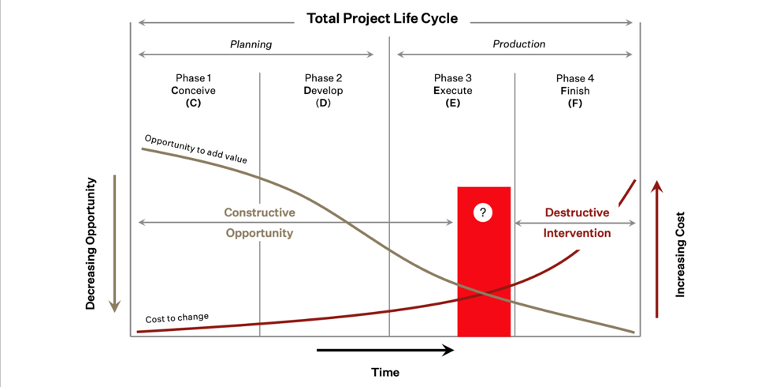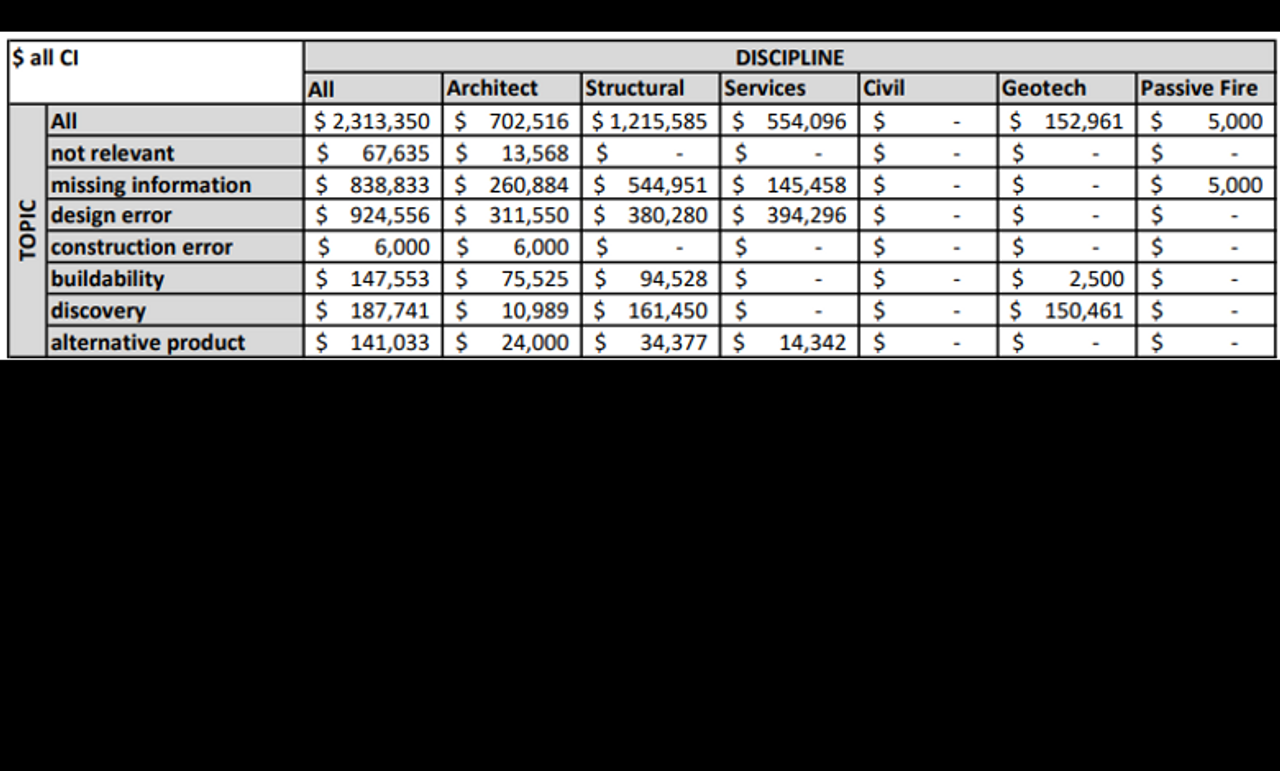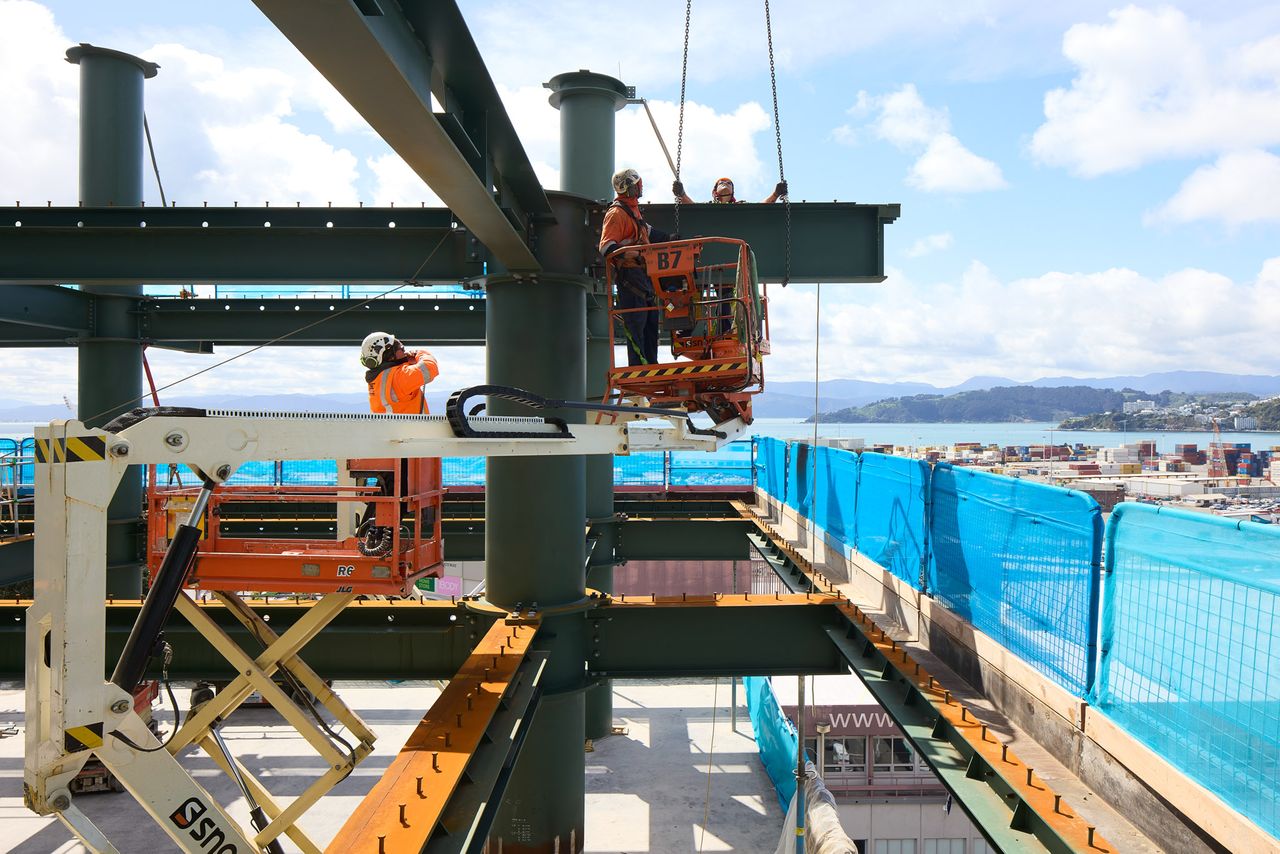News & Insights
Winning Before Kick-Off
Date
- 2025 July

In football, the sweeper is the unseen strategist - reading the game, closing gaps, and anticipating problems before they unfold. In construction, we need our own version of the sweeper: a skilled professional who works behind the scenes to ensure information flows correctly and risks are tackled early. With the construction industry facing a rising tide of Requests for Information (RFIs), this proactive role is more critical than ever.
Requests for Information, or RFIs as they’re commonly known, are part and parcel of working in construction. They arise when there is a gap between what is designed and what must be built. But their frequency and cost are climbing fast. As designs become more complex, the volume of RFIs typically rises, affecting timelines, inflating costs, and straining already tight budgets.
 The most cost-effective way to address RFIs is not on site, but upstream during the design phase. Through an in-depth project review, RCP investigated where most RFIs originated on a medium-sized, six-year project. The results were revealing. Over 1,000 RFIs were logged, with architectural and structural disciplines contributing the largest share. Missing information was the most common cause.
The most cost-effective way to address RFIs is not on site, but upstream during the design phase. Through an in-depth project review, RCP investigated where most RFIs originated on a medium-sized, six-year project. The results were revealing. Over 1,000 RFIs were logged, with architectural and structural disciplines contributing the largest share. Missing information was the most common cause.
 Note – High-level overview with some RFIs
Note – High-level overview with some RFIs
Counting the Cost
However, the number of RFIs alone does not tell the full story. Some were quickly resolved with minimal cost implications, while others took longer and/or cost more. On this project, RFIs that led to a Contract Instruction (CI) cost an average of $2,425 each. Yet, this figure doesn’t account for the time impact, as each RFI took an average of 21 days to resolve. One New Zealand construction CEO estimated the real cost of an RFI at $10,000 to $15,000, accounting for indirect effects like lost productivity and delayed job starts.
Discipline-Specific Insights
Architecture
In this project, 44% of all RFIs were allocated to the architects, making them the largest source of RFIs. Within this group, more than half were due to missing information, while around a quarter were related to design errors.
Comparing the volume and cost of RFIs reveals some important insights. While missing information accounts for a greater number of RFIs, the cost of those triggered by design errors is significantly higher - more than double, in fact. This is not surprising, as it can be straightforward to provide missing information, but design errors often have a multitude of knock-on effects.
The high number of RFIs reflects not only the scale and complexity of the project but also the inherent challenge of delivering precise detail across every element of the design. They also highlight the increasing pressure architects face in today’s budget-driven environment. Clients expect highly detailed, technically complex designs within often tight, and at times unrealistic, timeframes. This challenge isn’t unique to New Zealand; it’s part of a broader global trend affecting the industry.
Structural Engineering
Structural RFIs made up 36% of the total. In this discipline, missing information led to higher costs than design errors – a reversal of the architectural trend. The reason? This cost difference is often due to the need for last-minute solutions on site. When key details are missing from structural drawings, contractors must source materials quickly to stay on programme, usually at a premium, leading to expensive workarounds and time pressures for the site team.
Building Services
Although fewer in number (17% of RFIs), building services RFIs had the highest average cost per CI: $36,000. This reflects the difficulty of resolving services issues late in the process, especially when systems must be realigned across multiple trades.
Response times were also the slowest. This is likely due to the performance-based nature of many services specifications and the high level of coordination required across multiple systems and trades - such as HVAC, electrical, and plumbing. Aligning changes can be complex, often involving several parties, which contributes to longer response times and increased downstream costs.
Geotechnical
Despite their low volume, geotechnical RFIs had the highest average cost at $75,000 per RFI, reflecting the significant unpredictability and expense involved in understanding site conditions before construction begins. They also took the longest to resolve, averaging 29 days, 36% longer than the average across all disciplines.
Given the complexity and cost implications, it's essential that geotechnical aspects receive early attention during the design process.
Passive Fire and Civil
Passive Fire contributed under 3% of RFIs, which is expected given its relatively small scope within the overall project. Most of the RFIs were due to missing information. While relatively inexpensive to fix, these RFIs still caused avoidable delays, highlighting the need for early integration of fire requirements. It is important to note that for other recent projects poor passive fire design can significantly impact the project negatively.

The Case for Design Reviews
As the data shows, many RFIs stem from coordination gaps and insufficient QA. With building codes becoming more complex and consultants more specialised, a single weak link can disrupt an entire project.
That’s why RCP advocates for embedding Design Challenge Sessions along the design journey. These design assessment reviews allow input from a multidisciplinary point of view, helping identify issues early and create build-ready documentation. Clients expect better outcomes and rightly want assurance that their investment in design is paying off.
Market Maturity – Learning from Canada
RCP’s expansion into Canada provided a fresh view of approaches taken in other regions. We’ve seen how mature markets such as North America and Canada have embraced Design Assessment Services. This process involves engaging an external credible party to review designs early in the project lifecycle. It’s a proactive approach that not only improves project outcomes but also significantly reduces risk and administrative burden during construction.
Clients who try this approach quickly see its value. Independent peer reviews, whether at key milestones or on an ad hoc basis, provide stakeholders with fresh insights and perspectives on better workflows and quality assurance. Furthermore, design assessments offer a clear view of project health and progress at any stage, providing critical information for stakeholders to support stronger decision-making.


